Roguelike Musings: How "Berlin" is Calaworm?
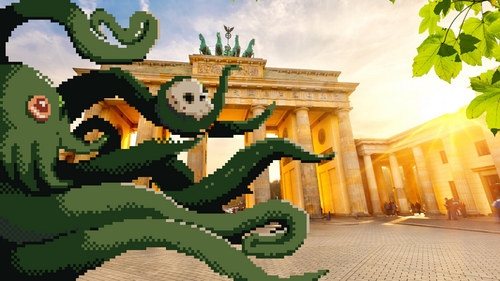
Recently I got involved in some (friendly) discussions about that aeons old Roguelike Controversy, that is the Berlin Interpretation ... personally I don't have any beef with it, however, I also think that it was a well-meant, but ultimately failed undertaking - it doesn't bring anything valuable to the table, except splitting the community and promoting stagnation. And shouldn't Game Development be all about experimenting with the tools at hand, exploiting existing ideas - building on the Shoulders of Giants?
So, yeah, I'm totally fine with the term "Roguelike" being subject to change:

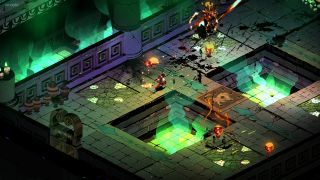
It doesn't take anything away from traditional turn-based Dungeon Crawlers (displayed in ASCII). If someone were to prefer those kinds of games, they could tell people they enjoyed the heck out of "ADOM" or "Nethack", and still get recommendations tailored closer to their liking.
So the term "Roguelike" becoming more and more diluted over time was inevitable, and proof, that people, in fact, DO appreciate growth and experimental novelty; the genre is expanding, becoming more nuanced. It is one of many traits a game can have, so obviously telling people you enjoy Roguelikes does not convey a lot, it's like saying you've been watching Netflix ... but you also have to tell them whether it's turn-based or action-based, is it Pixel-Art, 3D, Top-Down, ASCII, are you shooting things or whacking 'em up front, are you fighting at all, are you exploring dungeons or an overworld, and if you die, do you start fresh, or does the game remember some of the progress you've made?
Actually, why not call them "Traditional Roguelikes" and "Action/Modern Roguelikes"?
Oh wait, that's already a thing?
Case closed, then, I guess ...

Kinda similar thing happened to Horror Movies ... it's become such a broad term - sure, you can tell a scary story and be content, but you can also do romance, comedy, even social commentary.
And that's a good thing. <3
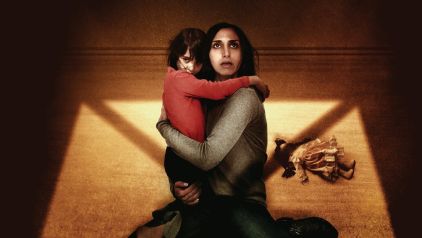
Anyway, not here to beat a dead horse, that was just my 2 cents, now let's have some fun:
I had people telling me, while they enjoyed playing "Calaworm", that the game shouldn't be considered a Roguelike in the very strict sense of the term, although the gameplay very much feels like one - which is exactly what I set out to do, when I started this project in 2020! I like to describe "The Ruins of Calaworm" as a Roguelike for people who are enamoured with the concept, but may be overwhelmed by the sheer mechanical and tactical complexity of the more classic representatives: hey you, yes you! I made this for you! <3
And also for me. :-)
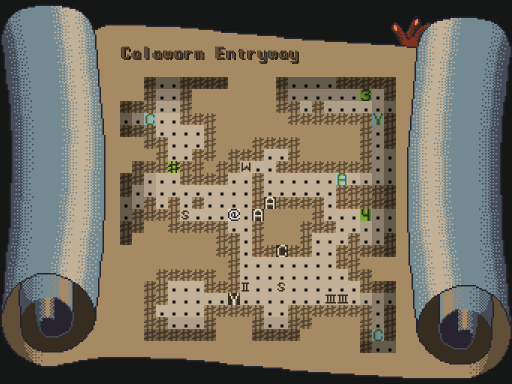
Now what I am going to do is: take a close look at the bullet points the Berlin Interpretation makes, then determine how much of a Roguelike "The Ruins of Calaworm" really is (remember, this is a hypothetical fun experiment with zero repercussion; "Calaworm" is what it is, and changing any aspects of it just to make it "more roguelike" is not part of the plan).
"Roguelike Defining Traits" in the Berlin Interpretation are divided into two groups, called "High Value Factors" and "Low Value Factors". For the sake of rating, I'm going to award 3 Points for any High Value Factor that applies to "The Ruins of Calaworm", and 1 Point for Low Value Factors. Actually, since some of the points are rather vague, let's allow Half-Scores as well, and for the sake of clean calculation make that 6/2 Points, respectively 3/1 (if only parts of the requirements are met).
HIGH VALUE FACTORS
(max. 54 Points)
==== Random environment generation ====
- The game world is randomly generated in a way that increases replayability. Appearance and placement of items is random. Appearance of monsters is fixed, their placement is random. Fixed content (plots or puzzles or vaults) removes randomness.
"Calaworm" uses a mix of procedural generation and fixed content: the world is randomly generated as a set of Cells, which are interconnected, but each Cell is represented by a Map randomly pulled from a pool of handcrafted layouts. Additional procedural algorithms are at work here, greatly enhancing replayability by shuffling Lock/Key Configurations, selecting different entry positions and flipping and turning the Map; Item and Enemy locations are randomly generated. Players can choose between starting "New Game", or "Rerolling the World Seed", with the former keeping most of the procedural parameters, and just rerolling Enemy positions and shuffling Item types around; it is possible to learn from previous runs, as crucial Items like Keys, Weapons and Shields appear in same locations. "Rerolling the World Seed" provides you with a brand-new configuration instead.
+3 (Awarding "Calaworm" Half-Score here, since only first two Stages are 100% procedurally generated).
==== Permadeath ====
- You are not expected to win the game with your first character. You start over from the first level when you die. (It is possible to save games but the savefile is deleted upon loading.) The random environment makes this enjoyable rather than punishing.
Not really, no. "Calaworm" features a thematic Save System, allowing you to spend Crystal Shards for Respawn Points. After each use prices increase, so it's a finite device (tuned to offer plenty of leeway, though). Dying wipes progress in the current world, there is no Meta Progression (except for an exploration-based mechanic called "Karmic Memory", which I won't spoil here). For those amoung you seeking additional challenge, final release has an optional Hardcore Mode available, introducing more restrictive rules for Respawning. And closing the game, of course, DOES save current state, so you're free to take breaks and continue later.
+3
==== Turn-based ====
- Each command corresponds to a single action/movement. The game is not sensitive to time, you can take your time to choose your action.
+6 (That's a Bingo!)
==== Grid-based ====
- The world is represented by a uniform grid of tiles. Monsters (and the player) take up one tile, regardless of size.
+6 (another Bingo).
==== Non-modal ====
- Movement, battle and other actions take place in the same mode. Every action should be available at any point of the game. Violations to this are ADOM's overworld or Angband's and Crawl's shops.
There's a Minigame available at Shrines, essentially putting you in a different game mode with altered controls. It's a crucial part of the experience, although the upcoming Demo won't offer any clues on why that is so. Be very curious!
+0
==== Complexity ====
- The game has enough complexity to allow several solutions to common goals. This is obtained by providing enough item/monster and item/item interactions and is strongly connected to having just one mode.
I do not consider "The Ruins of Calaworm" a very complex game! Shocking, right? It's mechanics are based on german classic "Kalawaum", which was a very streamlined experience; "Calaworm" added some meta-complexity on top of it, but the whole point of the project was to offer an alternative for people like me, who like turn-based Dungeon Crawling, but with less focus on number crunching and a more intuitive gameplay loop. While the game has plenty of meaningful decisions, they usually revolve around navigation and estimating risks; there's almost always something you can try to emerge victoriously from a dire situation, but it's less about the tools you possess, than about deeper understanding of the game's mechanics, and how to exploit them in your favor. And if it doesn't work out - well, that's Rogue-luck for you!
+0
==== Resource management ====
- You have to manage your limited resources (e.g. food, healing potions) and find uses for the resources you receive.
That's a YesYes. There are not a lot of Utility Items in "Calaworm", and another Item from the same class usually does not feature wildly different traits except for just being better or worse. Still, their number is finite - your most valuable resource are, in fact, Weapons and Shields, and no matter how fun the Energy Coil is to use, you absolutely have to learn to preserve their durability!
+6
==== Hack'n'slash ====
- Even though there can be much more to the game, killing lots of monsters is a very important part of a roguelike. The game is player-vs-world: there are no monster/monster relations (like enmities, or diplomacy).
Positive. While navigational puzzles are a huge part of "Calaworm"'s gameplay loop, you'll also spend time whacking Enemies with the Whip (or blasting them with the Blunderbuss).
+6
==== Exploration and discovery ====
- The game requires careful exploration of the dungeon levels and discovery of the usage of unidentified items. This has to be done anew every time the player starts a new game.
Half-score for "Calaworm": of course Exploration is one of it's main pillars, but because of the more static nature of Map Modules, even when rerolling the World Seed, recognizing patterns in the world during subsequent runs is a major part of the experience. Utility Items are not "unidentified", but initially hidden as a generic class symbol, and only after picking them up for the first time, you know what kind of Weapon, Shield or Consumable you've found. As long as you do not reroll the World Seed, layouts stay the same, but you still have to uncover the Fog of War carefully, as Enemy locations are shuffled around; a unique mechanic called "Karmic Memory" allows for faster, more efficient exploration on subsequent runs.
+3
LOW VALUE FACTORS
(max. 12 Points)
==== Single player character ====
- The player controls a single character. The game is player-centric, the world is viewed through that one character and that character's death is the end of the game.
Absolutely. +2
==== Monsters are similar to players ====
- Rules that apply to the player apply to monsters as well. They have inventories, equipment, use items, cast spells etc.
From a single glance at the code you'd think this applies to "Calaworm": they share the same class, and if I wanted to, I could make Enemies attack each other and deal damage accordingly. However, there are far too many "If monster() <> *player" exceptions defined, as for me to allow awarding Full-Score in good conscience. Sure, Enemies can pick up and hold a single Item, but wouldn't ever use it, they may only drop it on death; and when stepping on Traps, only some of them trigger in the same way as they would for the Player.
+0
==== Tactical challenge ====
- You have to learn about the tactics before you can make any significant progress. This process repeats itself, i.e. early game knowledge is not enough to beat the late game. (Due to random environments and permanent death, roguelikes are challenging to new players.) The game's focus is on providing tactical challenges (as opposed to strategically working on the big picture, or solving puzzles).
This does apply to "The Ruins of Calaworm", but due to the game's streamlined nature you're expected to gain a grasp on things much faster (occasionally you might get stumped by an Enemy, surprising you with a mechanic you haven't been exposed to yet). However, solving navigational puzzles is a huge part of "Calaworm"'s exploration, and full release will also have a an optional Bonus Objective, which actually has you working on a bigger picture thingy!
+1
==== ASCII display ====
- The traditional display for roguelikes is to represent the tiled world by ASCII characters.
There's two pieces of a Map you can collect in each Region, and once you've found both, you can call a Map and browse the world you've discovered so far. Map design is in ASCII, but it's more of a tribute thing, while the actual game takes place in a fully tiled surrounding. So that's a Nope (even thinking of letting you choose between an ASCII-Map, and a more "friendly" design).
+0
==== Dungeons ====
- Roguelikes contain dungeons, such as levels composed of rooms and corridors.
That's another yes. There are also outdoor areas, featuring forest tiles instead of walls, but mechanically they don't differ from Dungeon Tilesets.
+2
==== Numbers ====
- The numbers used to describe the character (hit points, attributes etc.) are deliberately shown.
Nope. In fact, the game is very light on stats; among the few deliberately shown are Hitpoints, almost everything else is designed in such a way, that it has to be infered from context and experience. When picking up a Weapon, the game will tell you whether it's better or worse than currently equipped, but that Ghouls hit harder than Deep Ones you gotta learn the hard way (trust me, you will)! This goes with the game's design philosophy, aiming for less brooding over mathy dependencies, and instead enforcing a more intuitive playstyle.
+0
CONCLUSION
(38/66 Points)
And that is that. We used Science to determine, that on a scale of Roguelike "The Ruins of Calaworm" is, in fact, pretty Roguelike (which is more Roguelike than I expected, but still less Roguelike that I hoped it would be).
But I can live with that.
Can you? <3

The Ruins of Calaworm
Turn-based Dungeon Crawler with concise mechanics, where cute Retro Pixelart clashes with Lovecraftian Cosmic Horror.
| Status | In development |
| Author | Alexander Karenovics |
| Genre | Adventure |
| Tags | 2D, Dark Fantasy, Dungeon Crawler, Exploration, Level Editor, Lovecraftian Horror, Pixel Art, Retro, Roguelike, Turn-based |
| Languages | English |
| Accessibility | Configurable controls, Interactive tutorial |
More posts
- Known Issues // Demo v2.9.9.14Sep 05, 2024
- Patch v2.9.9.14 // Friendly Water & WidescreenSep 04, 2024
- Known Issues // Demo Build 2.9.8.13Mar 14, 2024
- Patch Notes (v2.9.8.13) // Better Tutorial & Show EquipMar 14, 2024
- Known Issues // Demo Build 2.8.8.12Jan 06, 2024
- Patch Notes (v2.8.8.12) // Epic Devices of CalawormJan 01, 2024
- Evil grows stronger: New Demo LaunchDec 12, 2023
- Patch Notes (v2.6.8.10) // Hotfix Backlink ExploitFeb 13, 2023
- Patch Notes (v2.6.7.10) // Friendly DoorsFeb 01, 2023
- Patch Notes (v2.6.6.10) // Customizable Controls & Align the Stars-RevisionJan 31, 2023
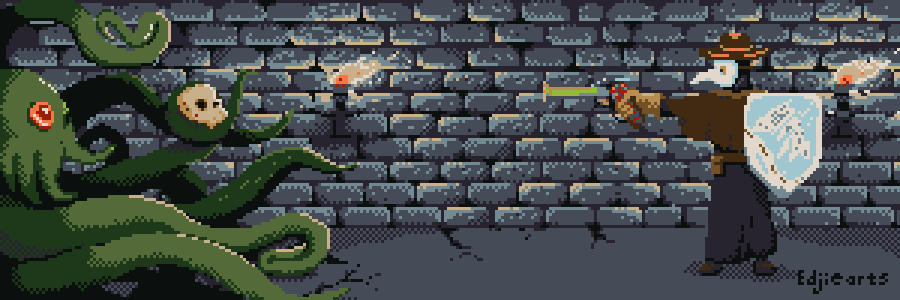
Comments
Log in with itch.io to leave a comment.
A roguelike is a game where you move like in Rogue, and this is just a list of features that roguelike players enjoy, with some omissions and some badly formulated, that was mistakenly assumed to be a definition. Canonical roguelikes rarely satisfy "Monsters are similar to players" or non-modality by the level of strictness you are expressing here.
IMO "non-modality" just means that there is no separation between exploration and combat (as opposed to e.g. typical JRPGs), so you should get full score despite the Shrine mini-games. And 0 for "monsters are similar to players" would be something on the level of mines in Minesweeper.